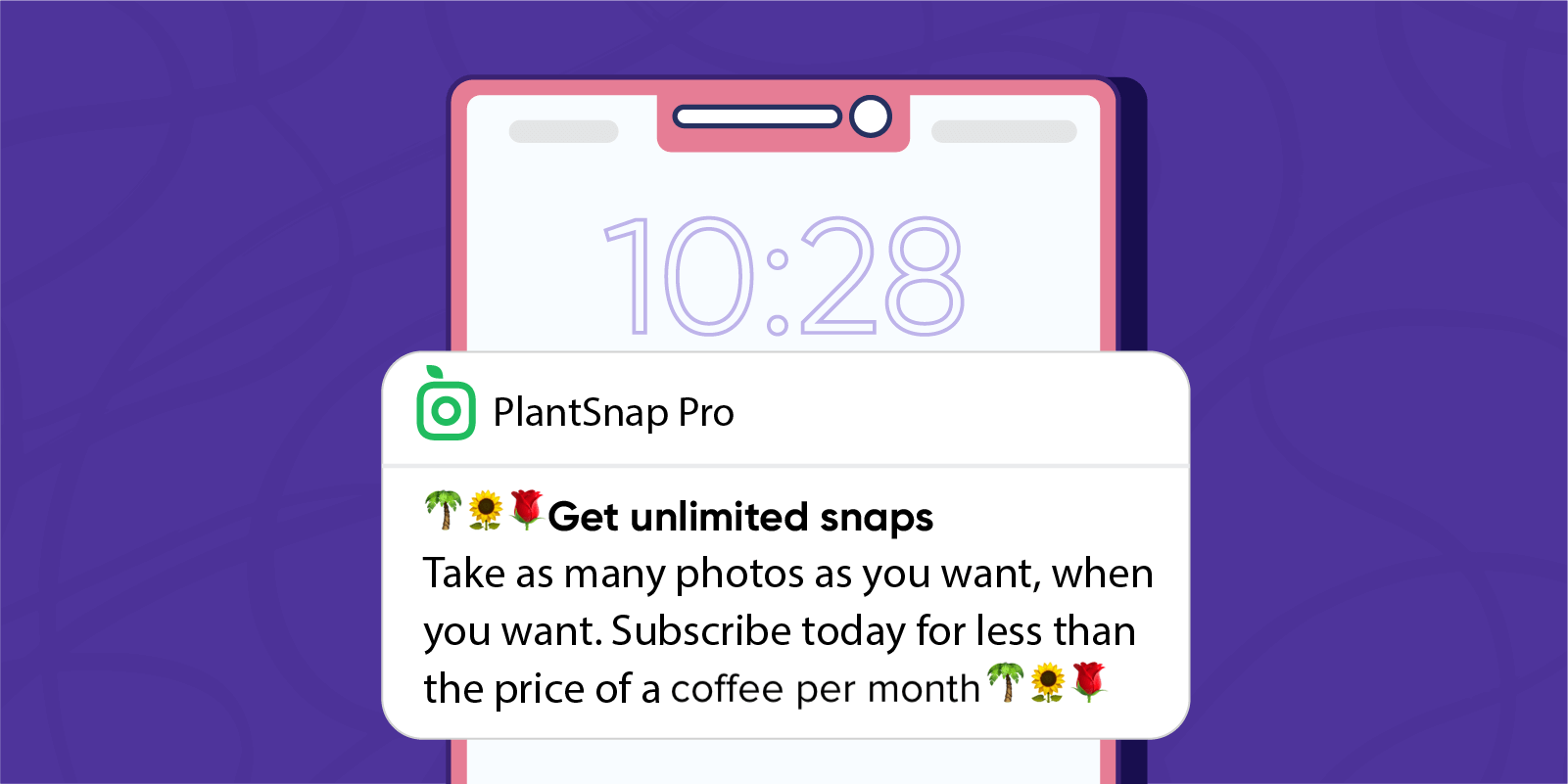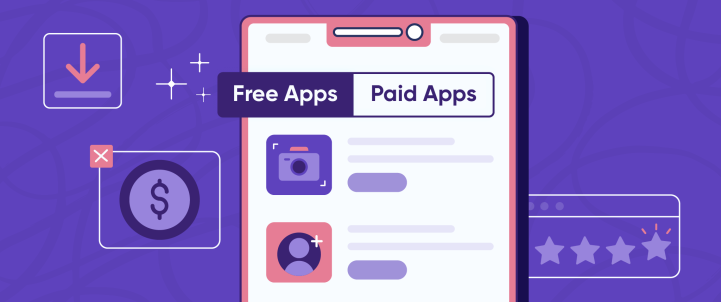“Should my app be free or paid?”
Given the current economic climate and ongoing air of uncertainty, you may be wondering if offering your app for free is a good way to increase your user base and give your business greater resilience.
And with major mobile brands like Headspace, HBO Max, and UberEats offering their services for free, you might be curious if you should follow suit.*
But switching up your monetization model is no small task. How do you know if this is the right play for your brand? How will choosing a freemium model impact your user growth? How difficult will it be to generate revenue with a free app?
The last thing you should do is make a knee-jerk decision. This article covers what you need to know about freemium apps — pros and cons — and what you should consider before selecting this popular monetization model for your business.
What’s the Difference Between Paid and Free Apps?
First question: what is a paid app? With paid apps, customers pay upfront to download the app from the App Store or Google Play. Free apps are free to download and typically make money through advertising, in-app purchases, or paid subscriptions.
Gaming, education, business, and utility apps generally do well as paid apps, since the value is in the app’s functionality.
What types of apps do well with the freemium model?
Apps that become more valuable with a larger user base, like social networking apps, should consider freemium. Successful free apps are those that have a wide appeal and can capture thousands upon thousands of users that companies can then monetize effectively through in-app ads or purchases.
Free vs Paid Apps Statistics
- What percentage of apps are free? 91.9% of apps in the App Store are free apps, compared to more than 96.4% of apps on Google Play.*
- 50% of all smartphone users have never paid for an app.*
- 98% of app revenue worldwide comes from free apps.*
- Which types of apps are users willing to pay for? According to our data study of more than 3,900 premium apps, gaming and education apps make up nearly 55% of paid apps across the App Store and Google Play.
- Do free apps get higher ratings? The average rating for free apps in the App Store is 3.73, compared to 3.38 for paid apps.*
How Do You Get Paid for Free Apps?
Freemium mobile apps are free to download. So how do free apps make money? Users can access the app’s basic functionality, while certain features or content can be unlocked by making a purchase.
Like any other monetization model, you must look at both the advantages and disadvantages of free apps. If you’re looking to grow as large a user base as possible, this is an effective strategy — free apps see dramatically higher download rates. Which isn’t surprising, since users are more likely to download if they can try your app before they pay for it.
The key to making freemium work is ensuring users experience enough value in the free version to convince them to open their wallets for more.
It can be tricky to strike the right balance between offering too many or too few free features. If the free version is too good, there’s no incentive for users to upgrade. If it’s not good enough, users won’t be convinced the upgrade is worth paying for.
Free vs. Paid: Which Model is Right for Your App?
A few questions to consider as you decide how to monetize your app:
- What’s unique about your app?
- Which features or content would people be willing to pay for? How much would they pay?
- What monetization models do your competitors use, and has it worked for them?
- What’s more important for your business right now: to gain users or gain revenue?

If your app has a social component or has the potential for viral growth through referrals or word-of-mouth, switching your paid app to a freemium model may be a smart call. You can always keep certain features or content gated behind an in-app purchase or subscription in order to maintain a predictable revenue stream.
You might also consider keeping your app paid and offering an extended free trial or basic free subscription tier to capture more downloads and find ways to monetize your growing user base over time. Once you’ve demonstrated value and earned a loyal customer base that keeps coming back to your app, you’ll have more opportunities to upsell and convert.
Case Study: How PlantSnap Got 500k Downloads in 4 Weeks by Switching from Premium to Freemium
Originally a paid app, plant identification app PlantSnap transitioned to a freemium model in 2019. And sure enough, in the first month after making the switch, the app netted approximately half a million new downloads.
But a lack of visibility quickly became a major hurdle to keeping those users active. Plantsnap’s team members were clueless as to what people were doing in the app, and it hindered their growth efforts.
“Paid apps are different,” shares Founder and CEO Eric Ralls. “People pay once and keep using the app. It’s easier to track the ROI and measure your marketing efforts, but with freemium apps, it’s a whole different world.“
Enter CleverTap. “CleverTap not only allows user communication, but also enables us to track events, create user journeys, and build targeted engagement for users both outside and inside the app,” Ralls explains.
The PlantSnap team started launching engagement campaigns including push notifications, in-app notifications, and email marketing to share pricing info, prompt subscription purchases, and encourage upsells. The app now sees impressive 30-day retention rates of 39%.
And what about revenue?
For any app, nudging freemium users to convert to premium is challenging. You have to say the right thing to the right user at just the right time. And you have to understand how those users are responding to campaigns so you can keep optimizing for conversions. Marketers need the right data to make smart decisions and improve ROI.
PlantSnap uses RFM Analysis to automatically break their user base down into actionable segments based on how recently and frequently they engage with the app, as well as how much money they’ve spent. They can then build targeted campaigns for each segment.
For example, champion users receive thank you emails and feedback requests on how to improve the app. Inactive users receive push notifications and emails updating them on what’s new in the app, with discounts for upgrading to the premium version.
Achieve Business Resilience With Any Monetization Model
Free or paid: however you acquire new users, your business won’t grow unless you can keep them coming back.
The longer a customer stays with your brand, the more opportunities you have for conversions — which means higher customer lifetime value. With higher CLTV, you can afford to spend more on acquisition campaigns and grow your app exponentially. And since good retention helps you better understand who your most successful customers are and why they come to your app, you’ll be better equipped to attract more of them.

See how today’s top brands use CleverTap to drive long-term growth and retention
Shivkumar M 
Head Product Launches, Adoption, & Evangelism.Expert in cross channel marketing strategies & platforms.
Free Customer Engagement Guides
Join our newsletter for actionable tips and proven strategies to grow your business and engage your customers.















































